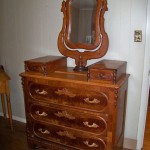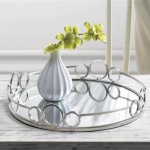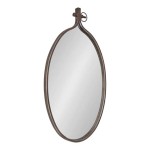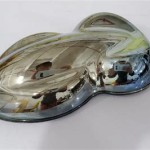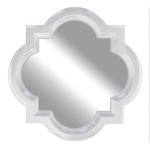How Do Mirror TVs Work?
Mirror TVs represent a fascinating intersection of interior design and technology, seamlessly blending screens into living spaces. When turned off, they appear as elegant mirrors, reflecting the room and enhancing its aesthetic. Activating the display reveals a vibrant television screen, transforming the mirror's functionality. This dual nature raises the question: how do these devices manage to transition so effectively between reflective surface and digital display?
The Science Behind the Reflective Surface
The mirror aspect of these televisions relies on a specialized type of glass known as dielectric mirror glass. Unlike traditional silvered mirrors, which use a metallic backing to create reflection, dielectric mirrors employ multiple thin layers of dielectric materials. These materials, such as metal oxides or other non-conductive substances, are applied in alternating layers with varying refractive indices. This layered structure manipulates light waves, causing specific wavelengths to be reflected while others are transmitted.
The precise thickness and arrangement of these dielectric layers determine the mirror's reflectivity and color. By carefully controlling these parameters, manufacturers can create mirrors that reflect a high percentage of visible light, resulting in a clear and accurate reflection similar to a traditional mirror. This high reflectivity is crucial for the mirror TV's illusionary effect when the screen is off.
The Technology Enabling the Display
Integrated within the dielectric mirror structure is a liquid crystal display (LCD) panel. LCD technology uses liquid crystals, substances that can manipulate light polarization, to create the image. A backlight illuminates these liquid crystals, and by controlling the orientation of the crystals, the amount of light passing through different pixels can be modulated. This modulation creates the variations in light and color that form the displayed image.
The LCD panel in a mirror TV is positioned behind the dielectric mirror layers. When the TV is off, the backlight is inactive, and the highly reflective mirror layers dominate, creating the mirror effect. Upon activating the TV, the backlight illuminates the LCD panel. The light from the LCD passes through the dielectric mirror layers. However, because the mirror is not perfectly reflective, a portion of the light from the LCD is transmitted, allowing the image to become visible.
Balancing Reflection and Transmission
A key challenge in mirror TV design is balancing the reflectivity of the mirror with the transmissivity required for the display. A highly reflective mirror produces a better mirror effect when the TV is off, but hinders image clarity when the TV is on. Conversely, a more transmissive mirror enhances image brightness but compromises the mirror's reflective qualities when off.
Manufacturers address this challenge by carefully engineering the dielectric mirror layers. They strive to optimize the layers to maximize reflection in the absence of backlight illumination while allowing sufficient light transmission when the backlight is active. This balancing act involves intricate calculations and precise manufacturing processes to achieve the desired dual functionality. The quality of the dielectric mirror significantly impacts the overall performance of the mirror TV, affecting both its reflection clarity and its display vibrancy.
The Role of the Two-Way Mirror
The concept of a two-way mirror, sometimes referred to as a one-way mirror, plays a role in the functionality of mirror TVs. A two-way mirror is essentially a partially reflective mirror. In brightly lit conditions, the reflective surface dominates, and the mirror functions like a regular mirror. However, if the area behind the mirror is significantly darker than the area in front, the mirror allows some light to pass through, allowing observation from the darker side.
While a mirror TV does not strictly utilize a two-way mirror in the traditional sense, the principle of partial reflectivity applies. The dielectric mirror, when the backlight is on, behaves similarly to a two-way mirror, allowing the light from the LCD to pass through while still retaining some reflectivity. This allows the image to be seen while still maintaining a degree of the mirror effect, albeit a diminished one.
Mirror TVs represent a sophisticated blend of optical and display technologies. The careful manipulation of light through dielectric layers and LCD panels allows for the seamless transition between a reflective mirror and a vibrant television screen, adding a touch of futuristic elegance to modern interiors.

What Is Mirror Tv And How Does It Work

What Is Mirror Tv And How Does It Work

Mirror Tv How It Works Joseph Mccarthy Mirrors

An Element For Two The Tv Mirror And Its Versatility
Are Tv Mirrors Worth It Mirplusbath

What Is A Mirror Tv How Does It Work Wemoove Full

How Does Screen Mirroring Work Iphone Ipad Mac Android

Mirror Tv High Quality Digital Television With Interactivity

How Does Screen Mirroring Work Iphone Ipad Mac Android

What Is Screen Mirroring And How Do I Use It With My Samsung Tv Mobile Device



